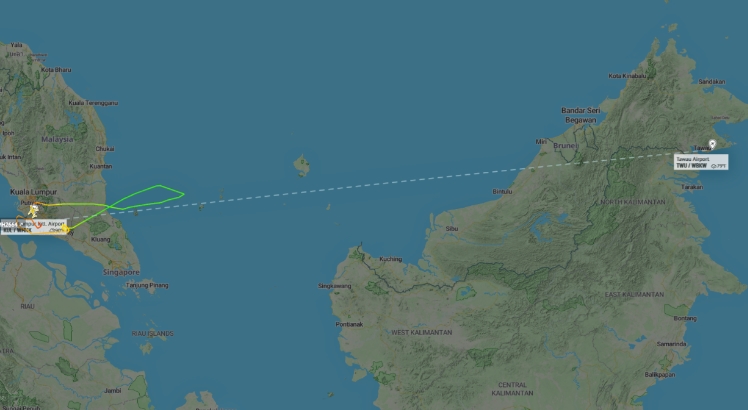Passengers onboard a Malaysia Airlines Boeing 737-800 reportedly got a scare when their plane suddenly dropped 7,000 feet on the weekend. The jet, en route from Kuala Lumpur to Tawau on Sunday, was turned around and returned to KL, with the airline later filing a Mandatory Occurrence Report with Malaysian aviation safety authorities.
A passenger onboard later said on social media the plane dived 7,000 feet in a matter of seconds, causing several passengers to “float” off the seats. Flight tracking website RadarBox.com shows the plane cruising over the South China Sea at about 30,000 feet when a sudden descent occurred.
RadarBox.com shows the plane between Tioman Island and Pulau Jemaja when it turned around. The jet circled several times south of the capital before landing safely. Malaysia Airlines says the aircraft experienced technical issues during bad weather. The airline added the pilots decided to turn back to Kuala Lumpur as a precautionary measure.
“Flight MH2664 from Kuala Lumpur to Tawau on April 3 performed an air turn back because of technical issues with the aircraft, compounded by bad weather en route,” says a statement from Malaysia Airlines. “The aircraft landed safely at KLIA at 5.03 pm. The safety of our crew and passengers remains of utmost importance to Malaysia Airlines.”
The pilots won widespread praise online for their handling of a tricky incident and their decision to turn around. While the investigation remains ongoing, the Civil Aviation Authority of Malaysia says they’ll be examining the plane’s internal Flight Data Monitoring System, but indicate the pilots appear to have responded correctly.
One likely reason for the sudden drop is a pocket of turbulence, colloquially referred to as an ‘air pocket’. In a nutshell, an air pocket is a region of low pressure causing an aircraft to lose height suddenly. Air pockets are just an extreme form of turbulence where a downdraft causes the aircraft to drop suddenly. Modern planes are built to withstand extreme turbulence, but an unexpected drop isn’t much fun for people onboard, especially if not buckled in. In 2017, pilots operating a flight between Langkawi to Kuala Lumpur using the same plane initiated an emergency descent.
Malaysia Airlines Bhd (MAB) reported in December last year that it turned cash-flow positive in October and November 2021 for the first time since the Covid-19 pandemic began. While air travel demand remains well below pre-pandemic levels, flight bookings have improved rapidly over the past two months as the country eased travel restrictions and launched vaccinated travel lanes (VTLs) with its regional neighbours.

